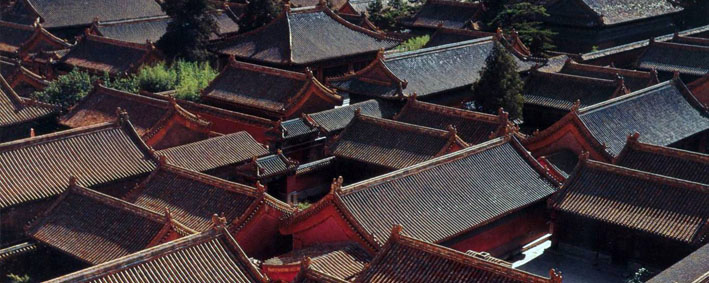 |
CCCH9001 China: Culture, State and SocietyChinese House and Garden: Architecture, Landscape, and Material CultureThis course is under the thematic cluster(s) of:
|
Course Description
By looking into the physical significance of Chinese architecture, cities and landscapes, this course introduces theories and principles of Chinese houses and gardens. Through the study of Chinese houses and their settings in a city, it brings out the daily life and social fabric for a Chinese man under Confucian influence. Through the study of Chinese gardens and the literati ideas behind the making of garden, landscape and painting, it introduces the artistic profile for a Chinese intellectual under the influence of Daoism. The course investigates how geography, society and economy, as well as aesthetic and ideology, shape the traditional physical environment in China. It deals with explorations of form and space, technology and material, as well as the ways in which these architectural attributes affect life patterns and values in a traditional society. The course particularly addresses how the culture profile was manifested in the architecture and urban spaces during the late Ming – an era of unique aesthetic orientation cultivated from a distinct stage of social and economic development in Chinese history.

Course Learning Outcomes
On completing the course, students will be able to:
- Demonstrate understanding of how physical patterns displayed in Chinese architecture and landscape were related to thoughts, values, technology as well as ways of life in Chinese culture.
- Explore ways of critical analysis on the relationship between Chinese built forms and landscape, as well as their ideas and social-economical contexts behind.
- Demonstrate understanding of how Chinese architecture and landscape are transformed over time, influenced by changes of thoughts, values, technology, and society in large.
- Apply the knowledge on the ways in which traditional buildings and landscape respond to and shape cultural values and physical forms in the modern world.
Offer Semester and Day of Teaching
Second semester (Wed)
Study Load
| Activities | Number of hours |
| Lectures | 20 |
| Tutorials | 10 |
| Fieldwork / Visits | 10 |
| Reading / Self-study | 20 |
| Assessment: Essay / Report writing | 30 |
| Assessment: Presentation (incl preparation) | 30 |
| Total: | 120 |
Assessment: 100% coursework
| Assessment Tasks | Weighting |
| Quizzes | 20 |
| Tutorial, lecture and field trip participation | 30 |
| Project presentation | 20 |
| Final essay | 30 |
Required Reading
- Boyd, A. (1962). Chinese architecture and town planning: 1500 B.C. – 1911 A.D. London: Alec Tiranti. [Chap. 4 (pp. 75 – 121)]
- Jencks, C, & Keswick, M. (2003). The Chinese Garden: History, Art and Architecture. Cambridge, Mass.: Harvard University Press. [pp. 209-217]
- Knapp, R. G. (2005). Chinese houses: The architectural heritage of a nation. Singapore: Tuttle Publication. [pp. 55-97]
- Lin, Y. (1936). My Country and My People. New York: Reynal & Hitchcock. [pp. 304-329]
- Wu, N. I. (Wu No-sun). (1963). Chinese and Indian Architecture: The City of Man, the Mountain of God, and the Realm of the Immortals. New York: George Brasiller. [pp. 29-45]
Course Co-ordinator and Teacher(s)
| Course Co-ordinator | Contact |
| Professor W.J. Wang Department of Architecture, Faculty of Architecture |
Tel: 3910 2101 Email: wjwang@hku.hk |
| Teacher(s) | Contact |
| Professor W.J. Wang Department of Architecture, Faculty of Architecture |
Tel: 3910 2101 Email: wjwang@hku.hk |
| Dr Z. Xu Department of Architecture, Faculty of Architecture |
Tel: 3917 2147 Email: zhuxu@hku.hk |

